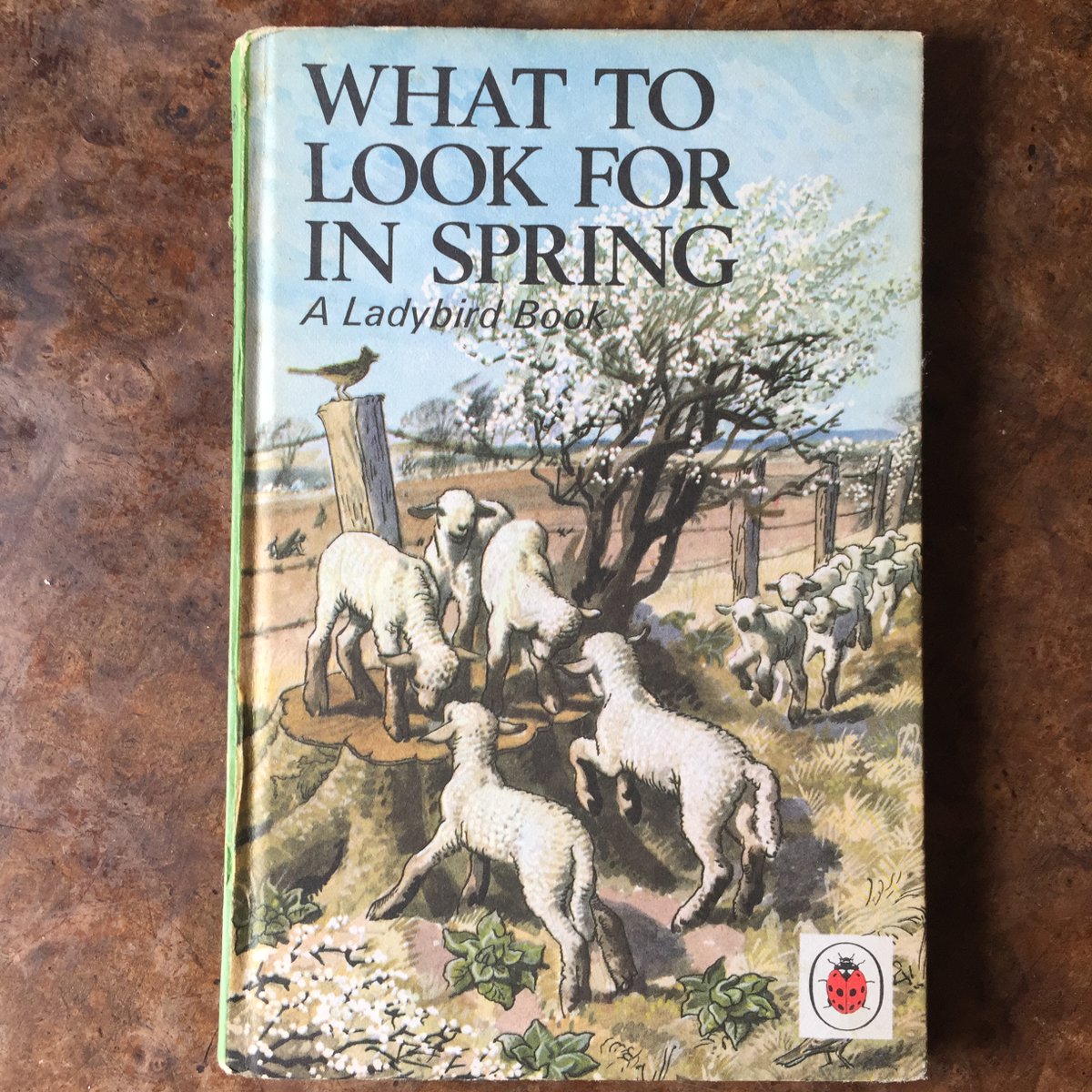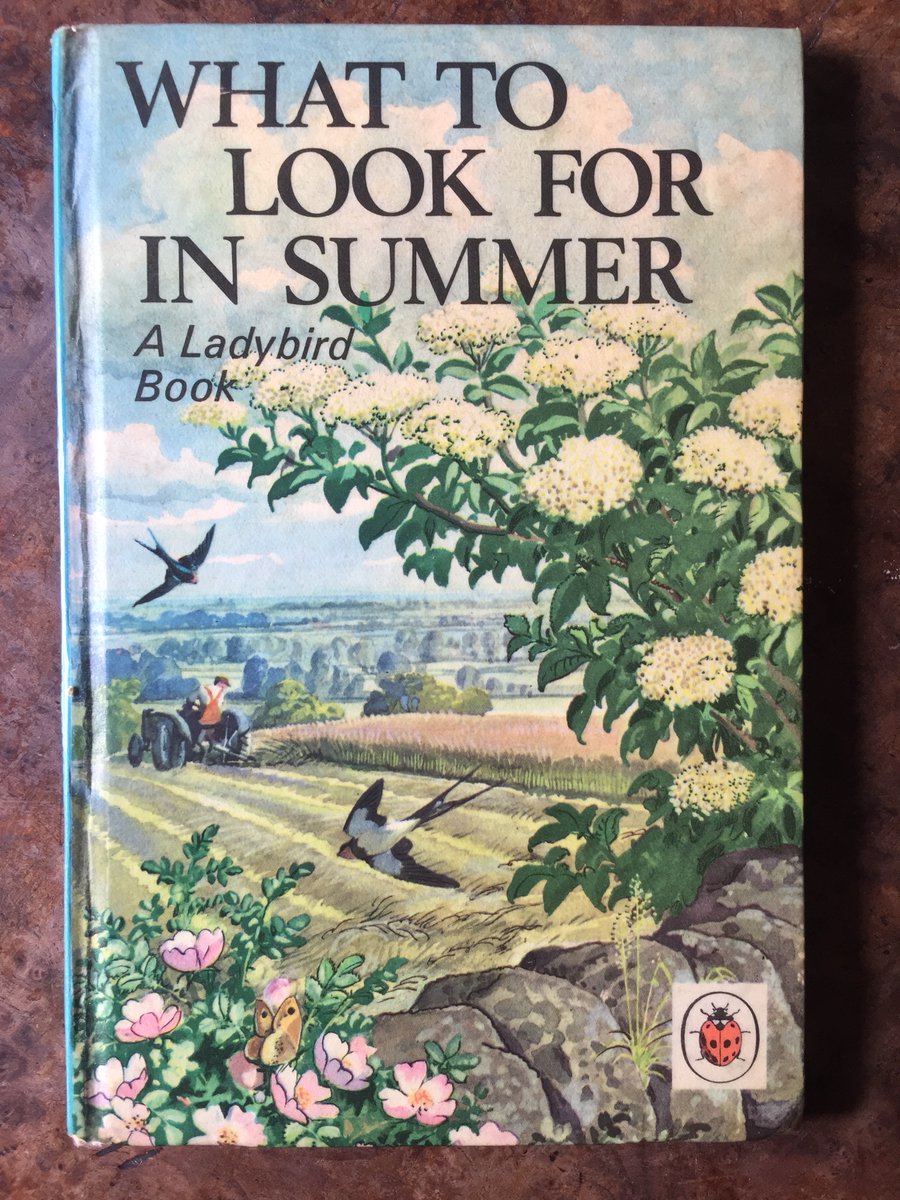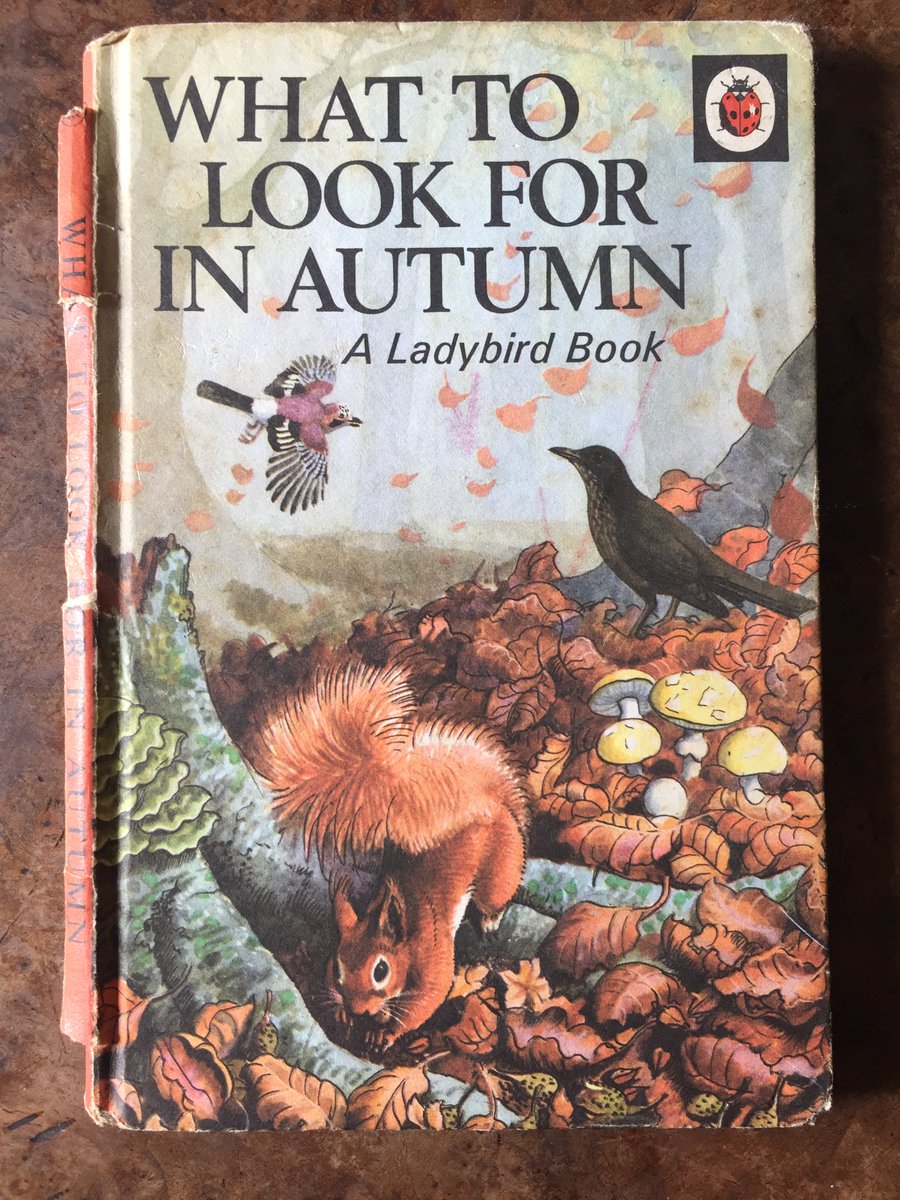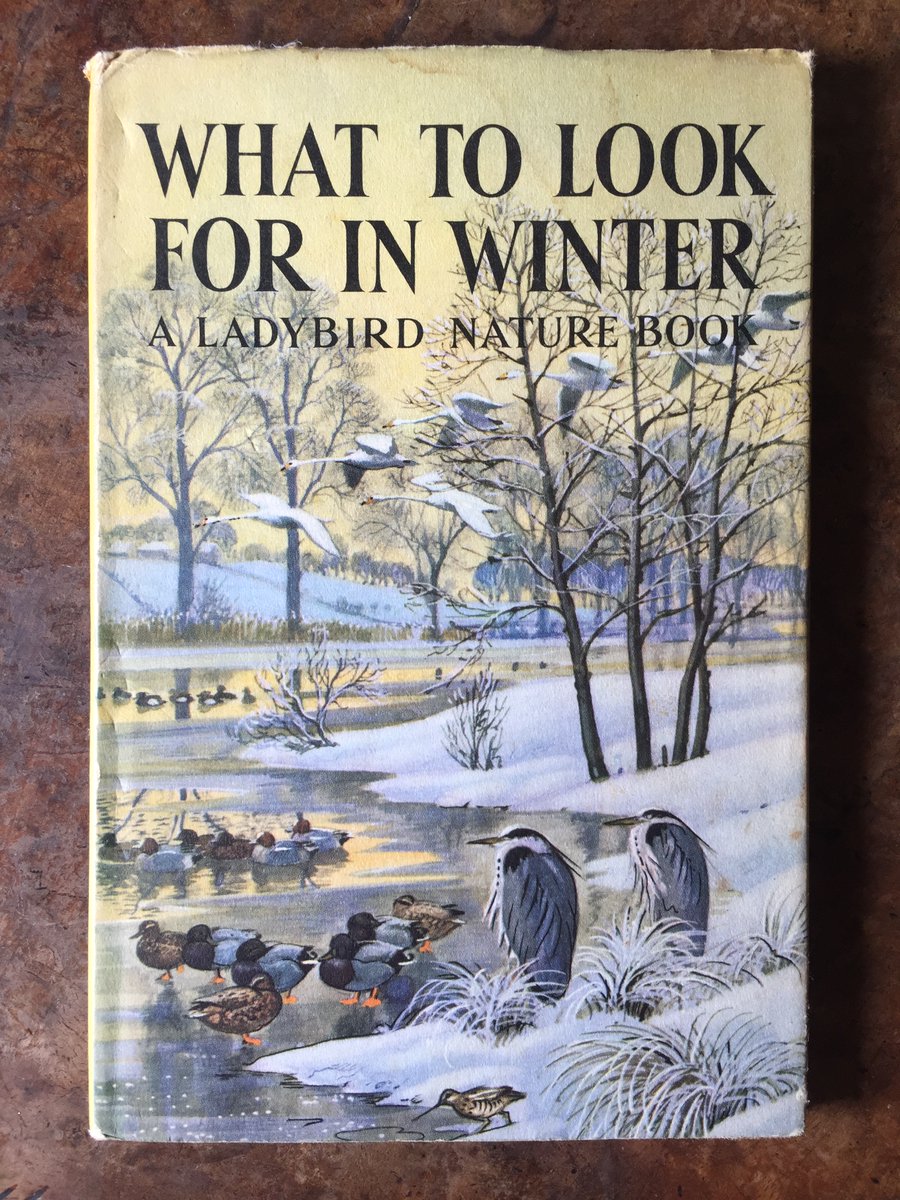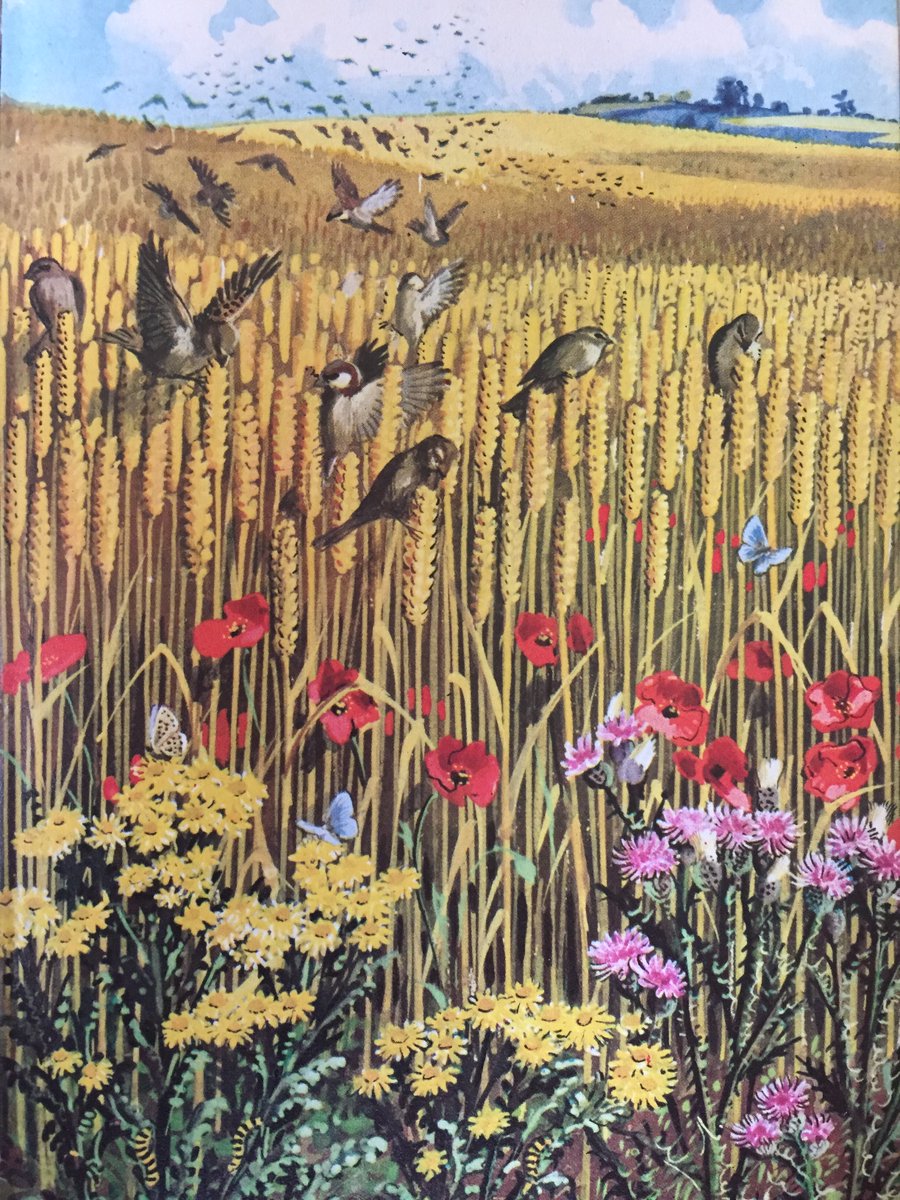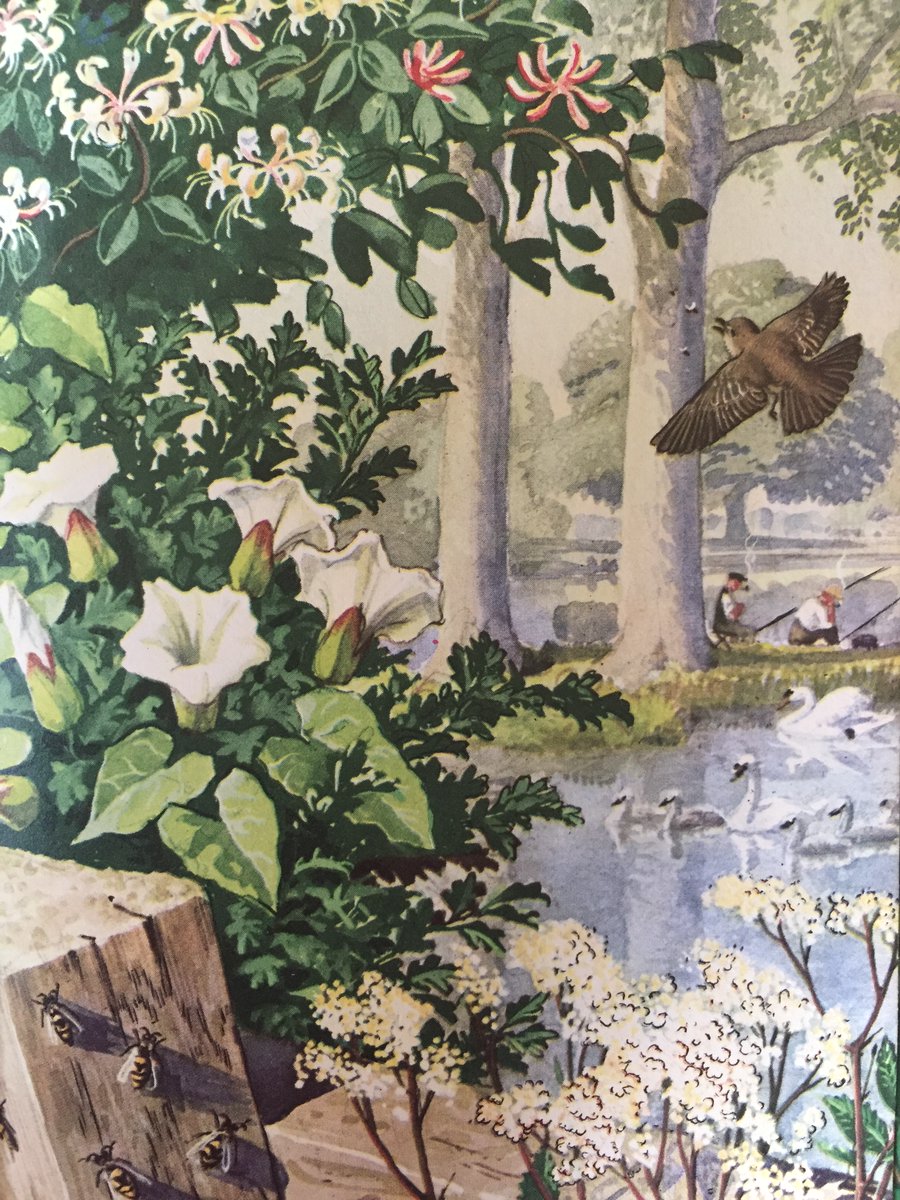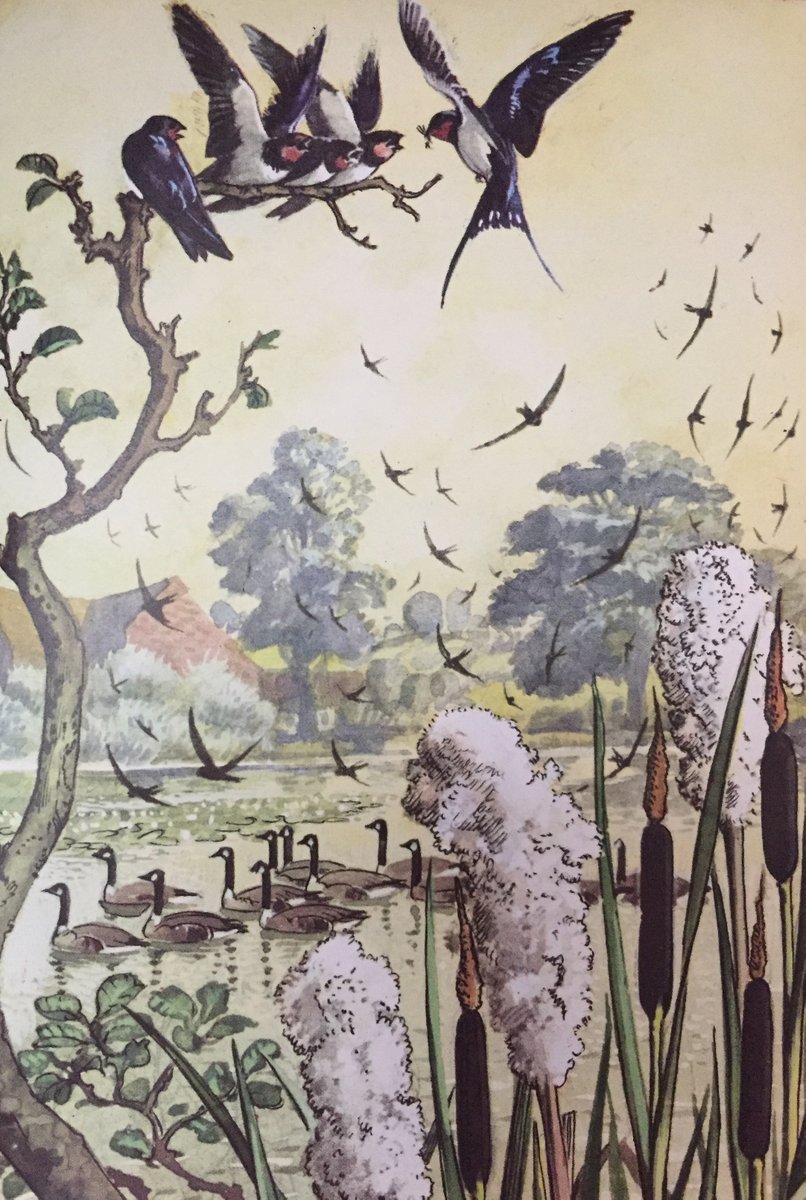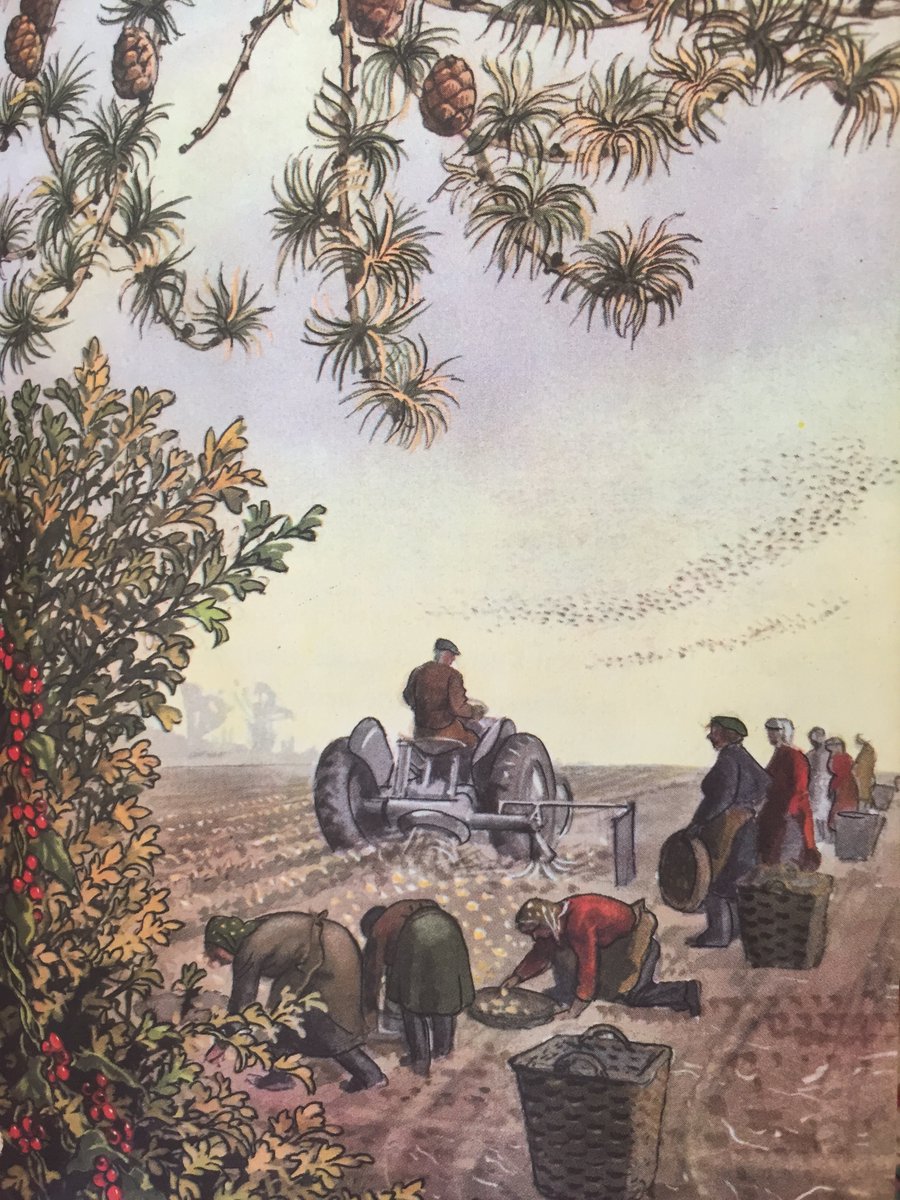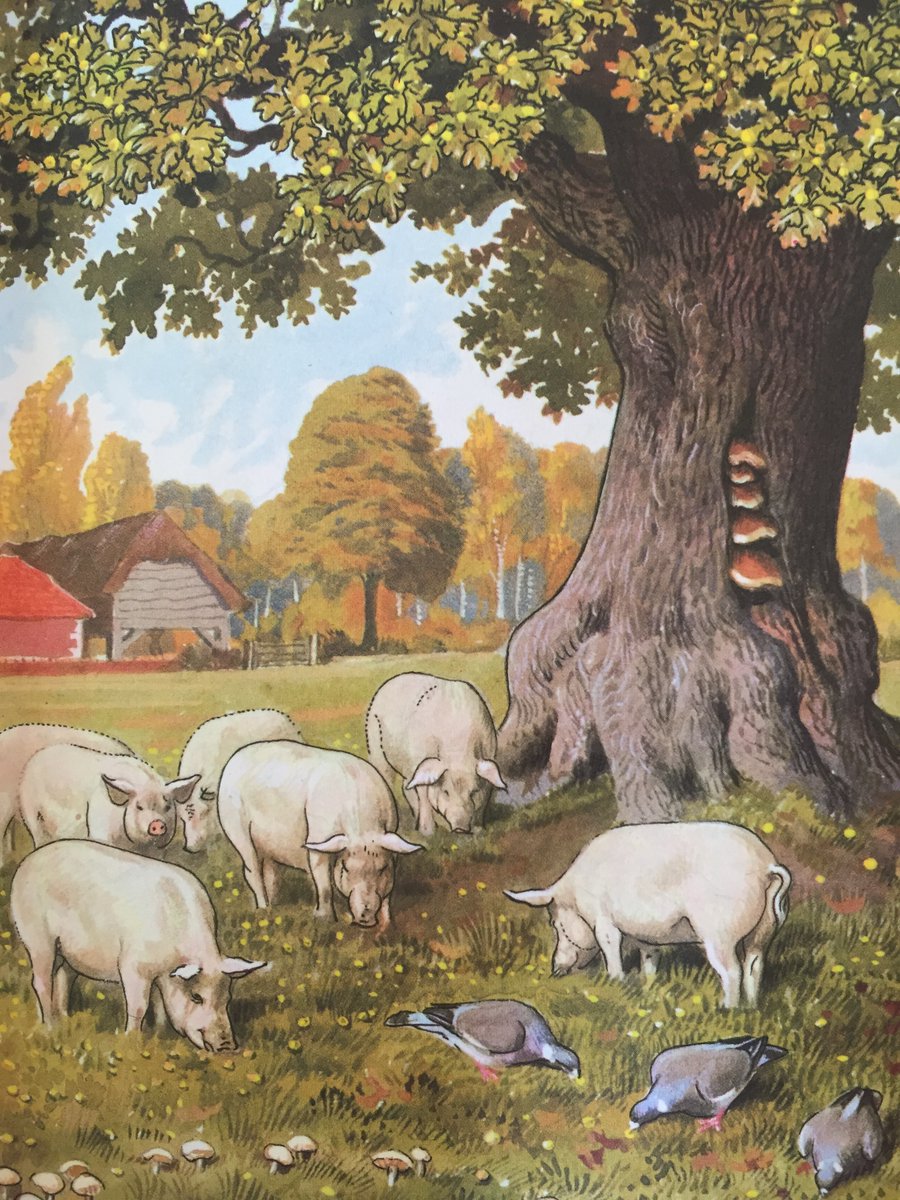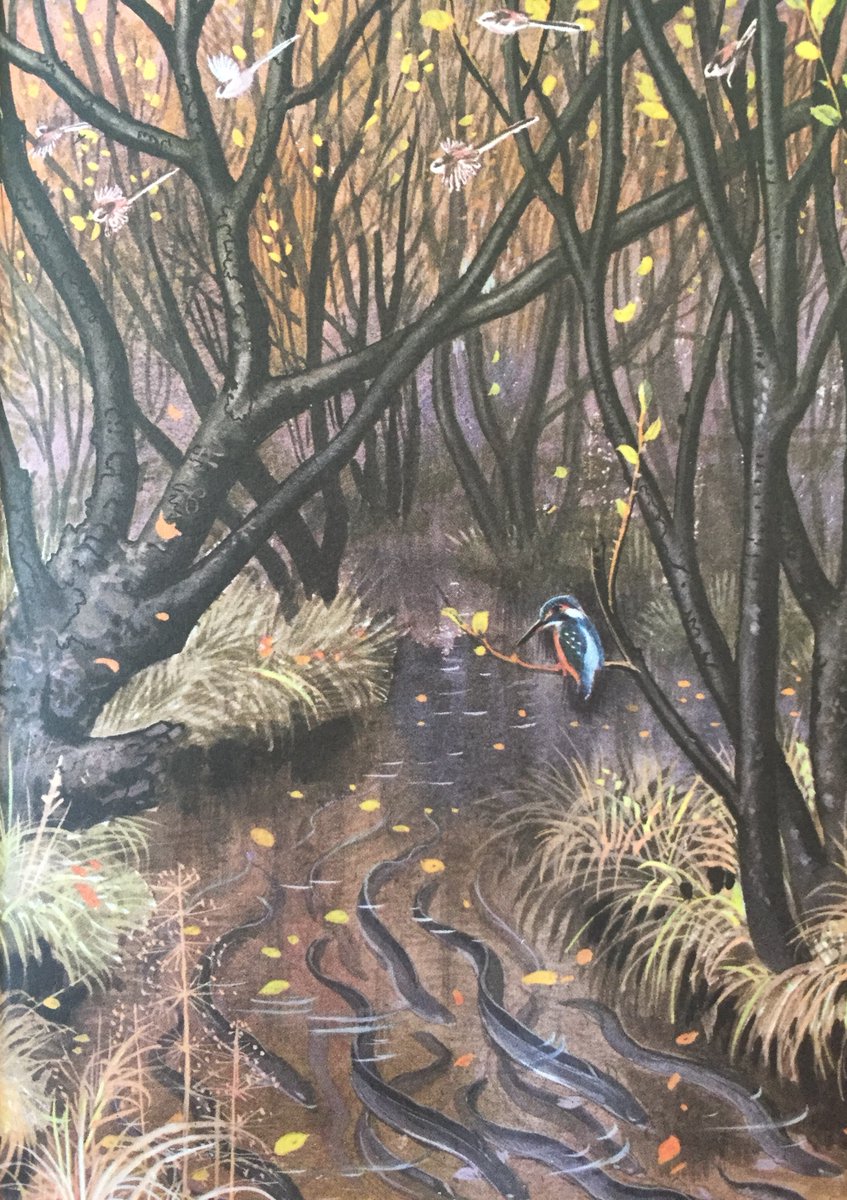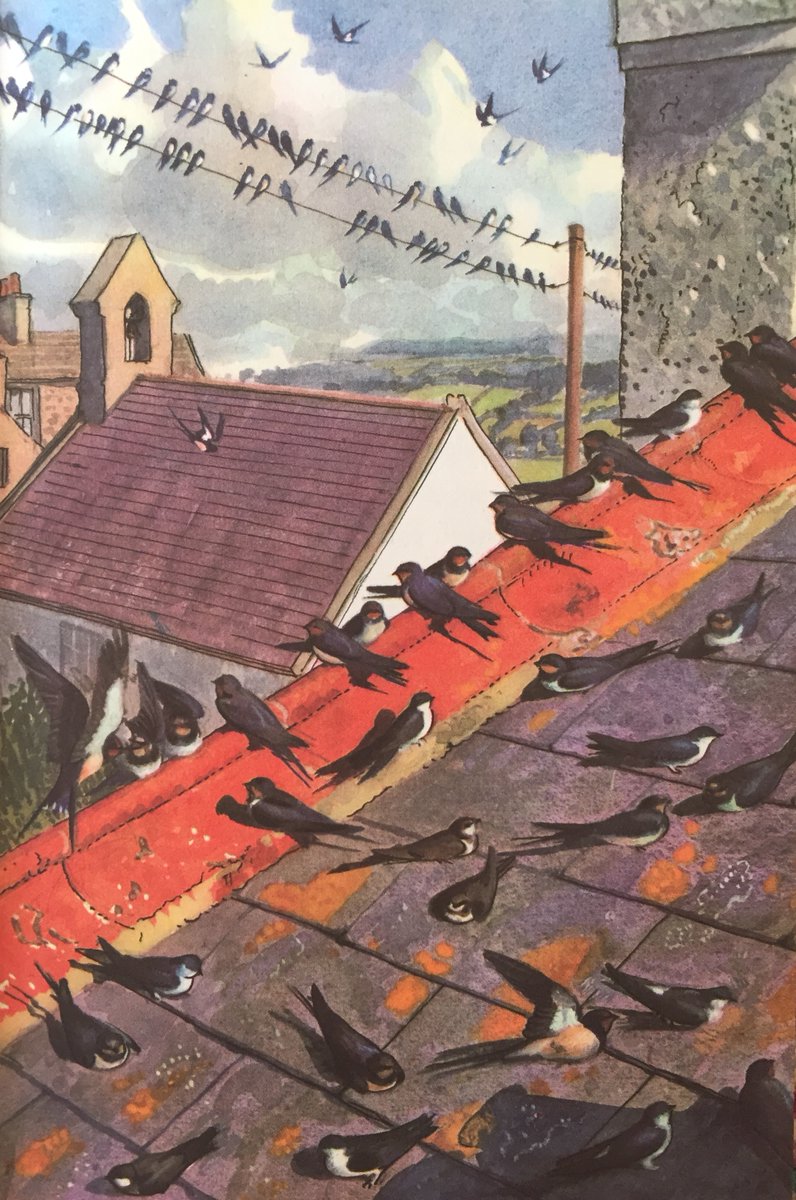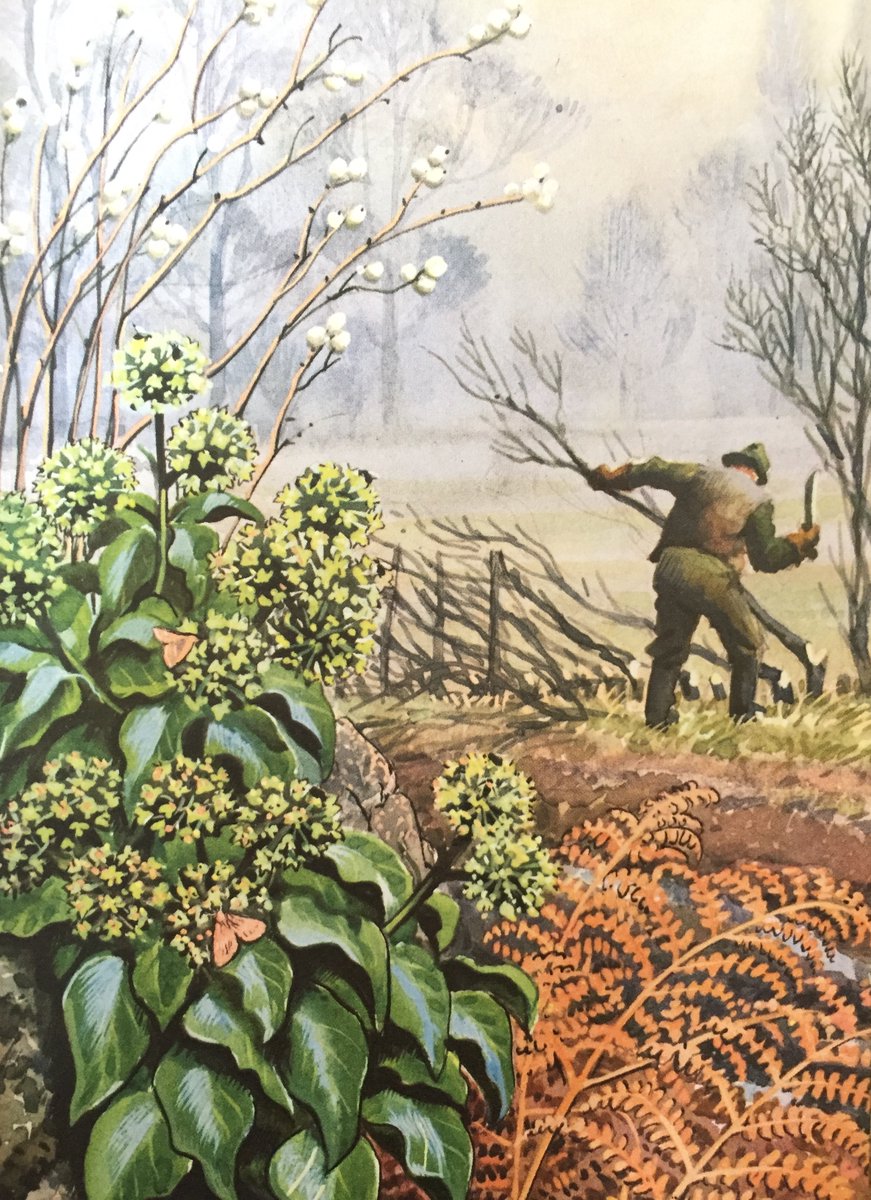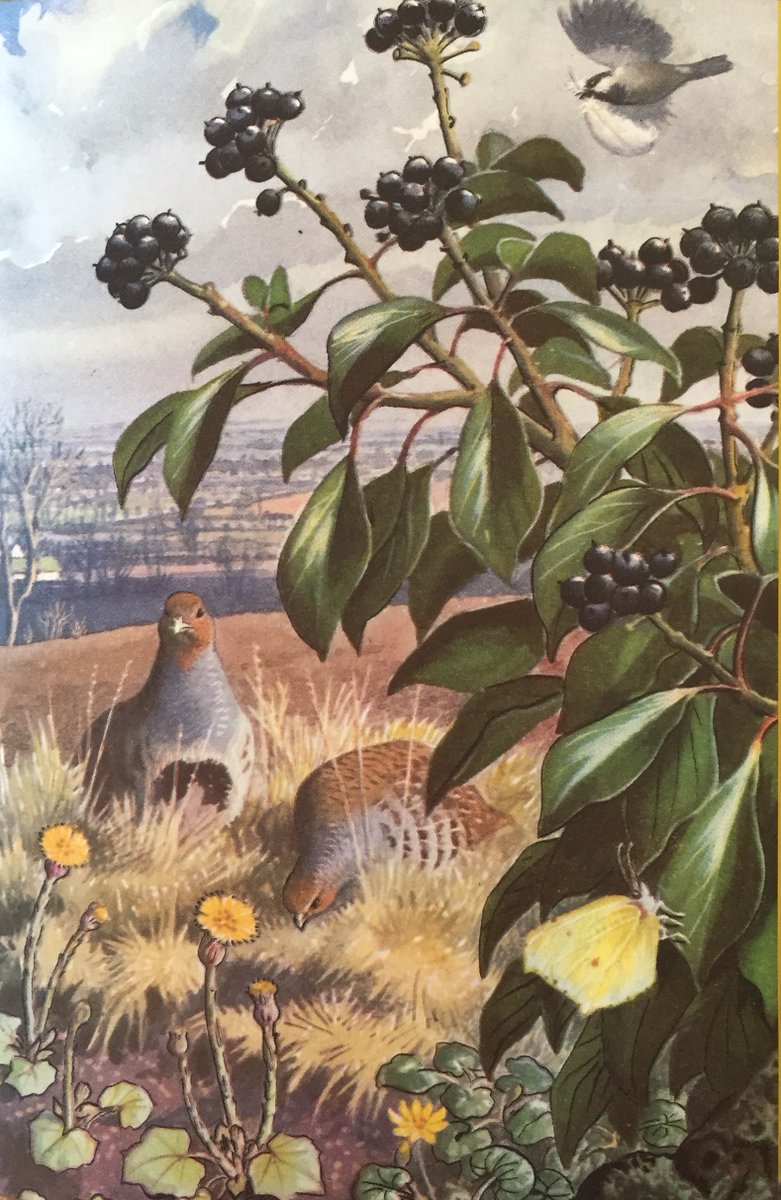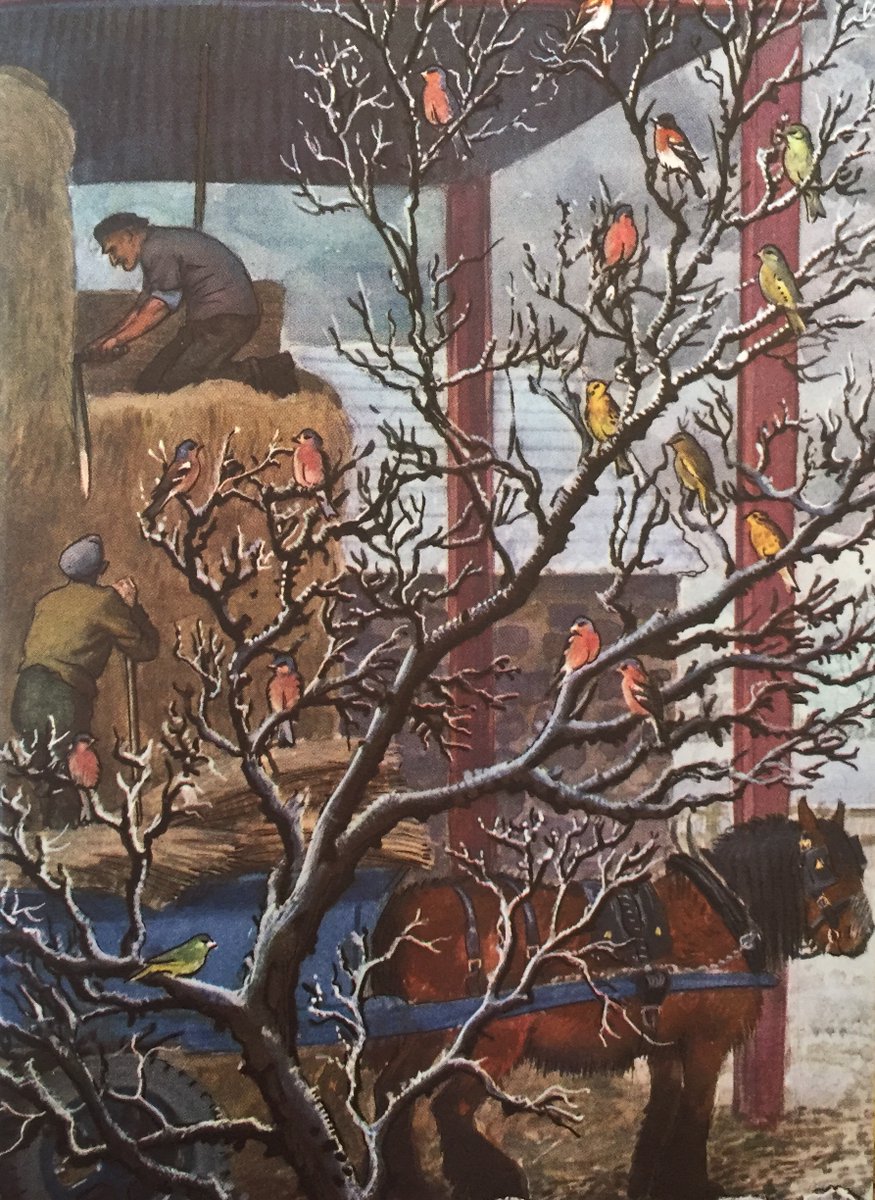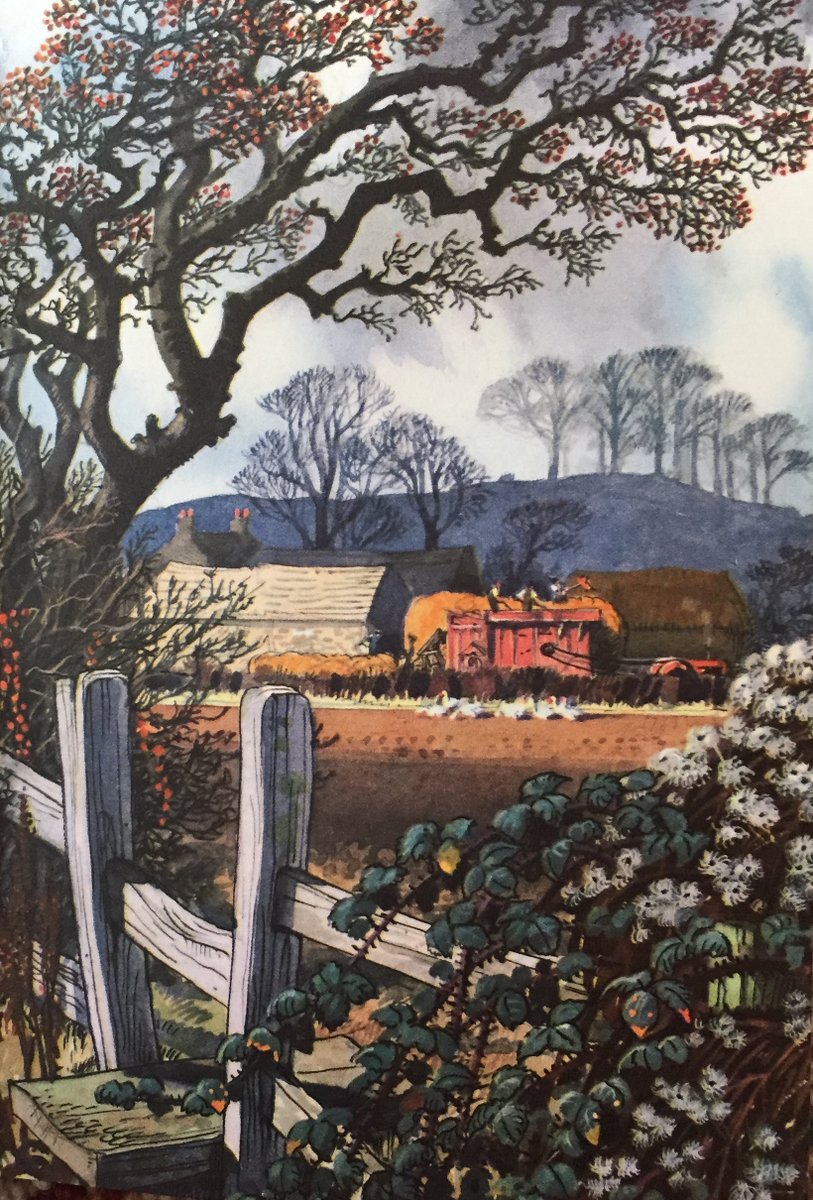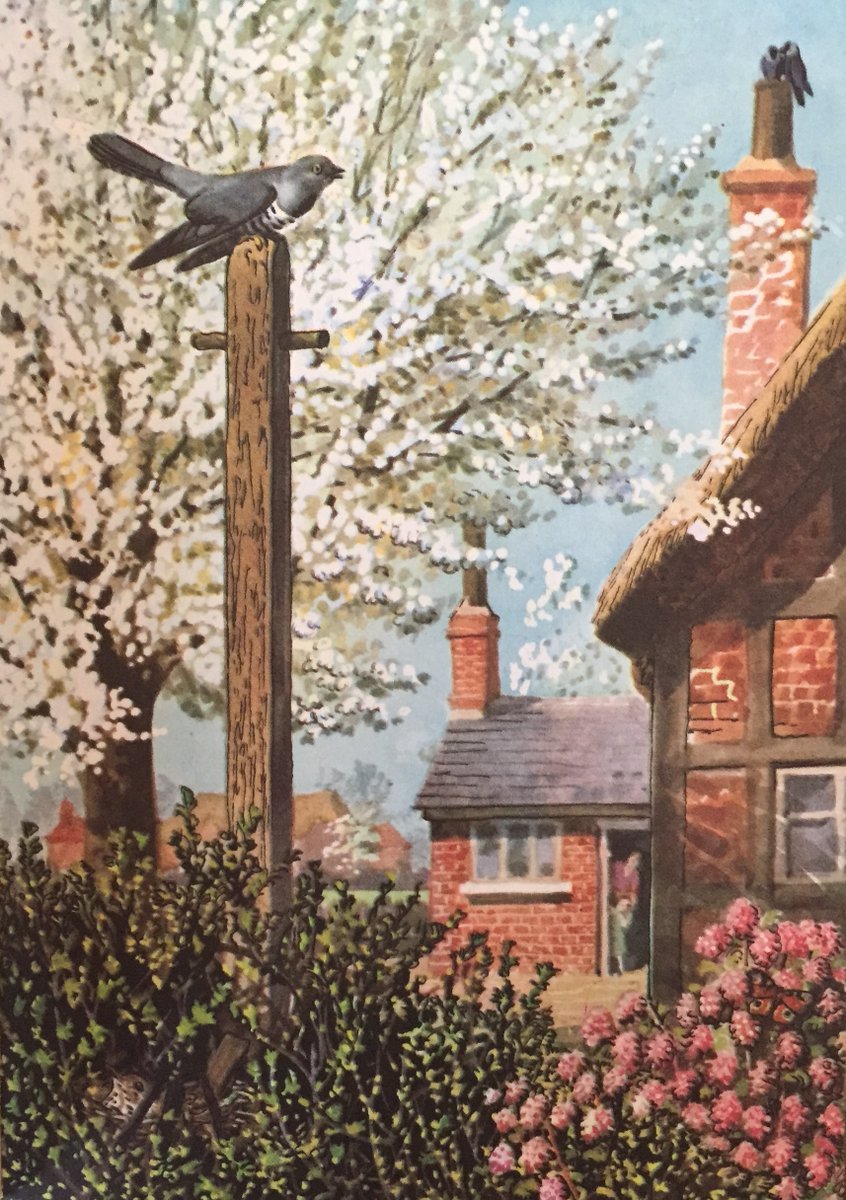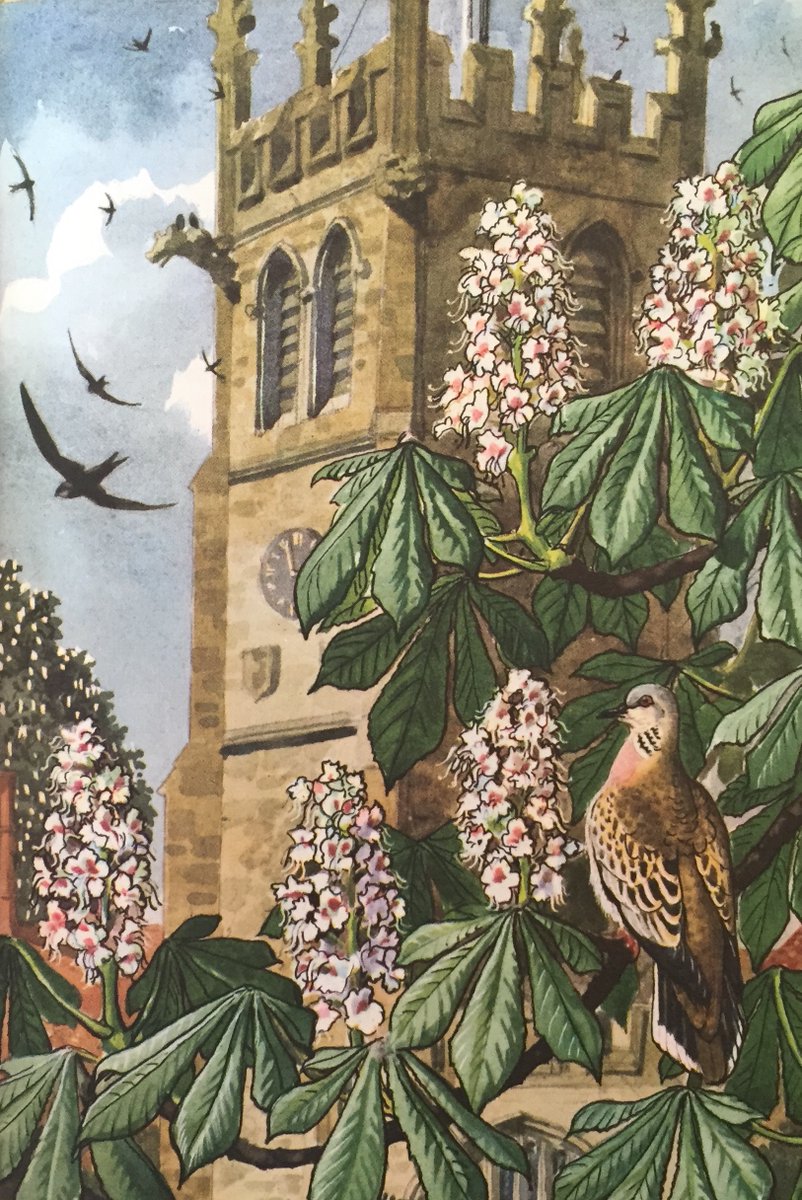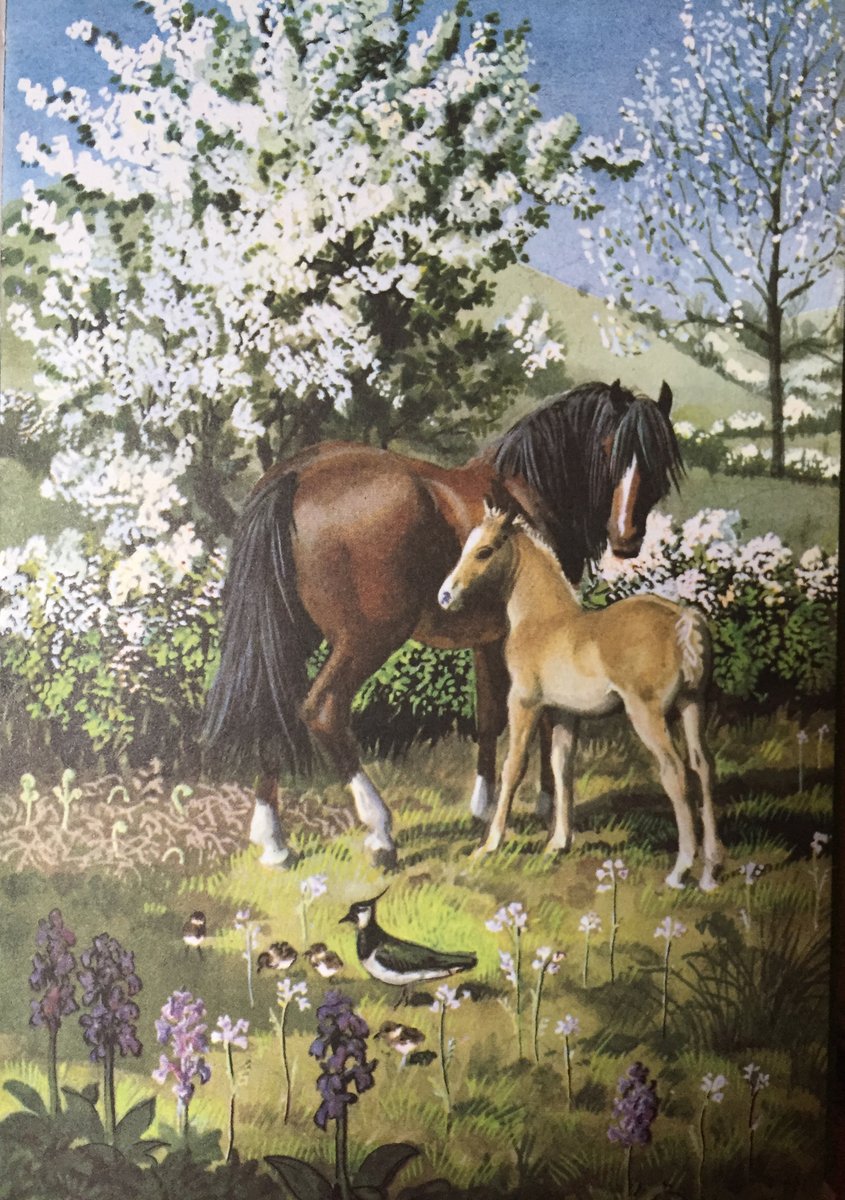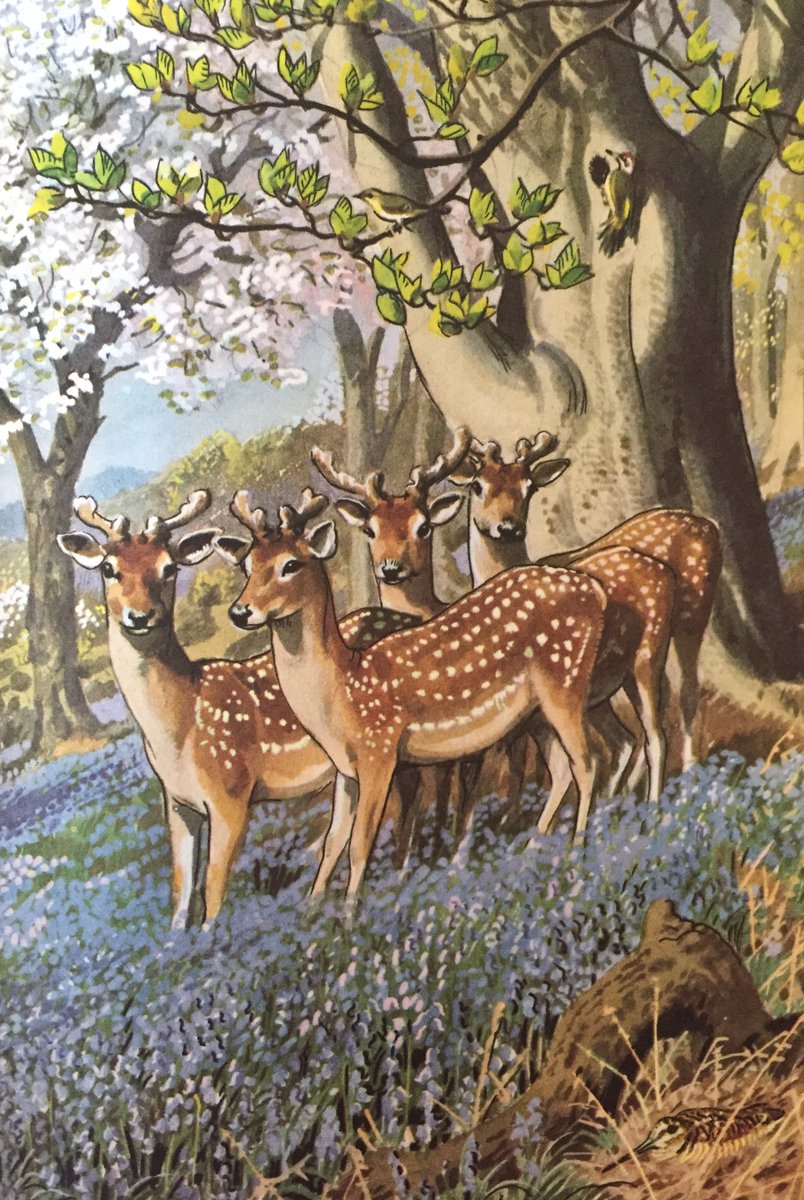I love these Ladybird Books, the illustrations by Charles Tunnicliffe are charming. But if his illustrations were true to life, flicking through their pages in 2020 is a stark reminder of what we have lost from our landscape in just 60 years. (THREAD)
I& #39;ve selected four illustrations from each book to highlight these changes, but I don& #39;t need to spell it out. If you& #39;ve been paying attention, you& #39;ll know what I mean. Our baseline has shifted so much since the 1960s, and sadly time is running out.
WHAT TO LOOK FOR IN SUMMER: 1.) A huge flock of Sparrows eating corn edged with abundant wildflowers - particularly Ragwort and Cinnabar caterpillars. 2.) Not Buddleia, but wild Privet covered in butterflies. 3.) A Spotted-Flycatcher, little seen now. 4.) So many Swifts.
WHAT TO LOOK FOR IN AUTUMN: 1.) Potato harvest, a small, community effort. Huge flocks of Lapwings circle in the distance. 2.) Free-ranging pigs eating acorns. 3.) An untouched wet willow wood, Eels migrating in vast numbers. 4.) Swallows and Martins en masse.
WHAT TO LOOK FOR IN WINTER: 1.) Hedgelaying, not flailing. 2.) Grey Partridges, red listed, rarely seen now. Ivy berries left for birds. 3.) Flocks of finches: Yellowhammer, Chaffinch, Greenfinch, Brambling. A working horse. Hay, not silage. 4.) Uncut Bramble, Dock seeds.
WHAT TO LOOK FOR IN SPRING: 1.) A Cuckoo in a garden, a rare sight now. 2.) A Turtle Dove, fading fast, and more Swifts. 3.) Hawthorn blossom on every hedge. Orchids, Lady& #39;s Smock, a Lapwing and her chicks. 4.) A Wood-Warbler, almost a mythical creature nowadays.
I wish I& #39;d been around to see the countryside back then, the fields of wild flowers and Swift-filled skies. The birdsong must have been triumphant. But even I remember a Cuckoo in our garden and abundant butterflies, which wasn& #39;t all that long ago - and yet fading far too fast.
After I posted this thread, Penguin kindly contacted me to ask if I would write a little more about the Ladybird Seasons collection and our vanishing wildlife. The feature is now on their website, and can be found here: https://www.penguin.co.uk/articles/2020/september/lost-countryside-ladybird-nature-books.html">https://www.penguin.co.uk/articles/...

 Read on Twitter
Read on Twitter